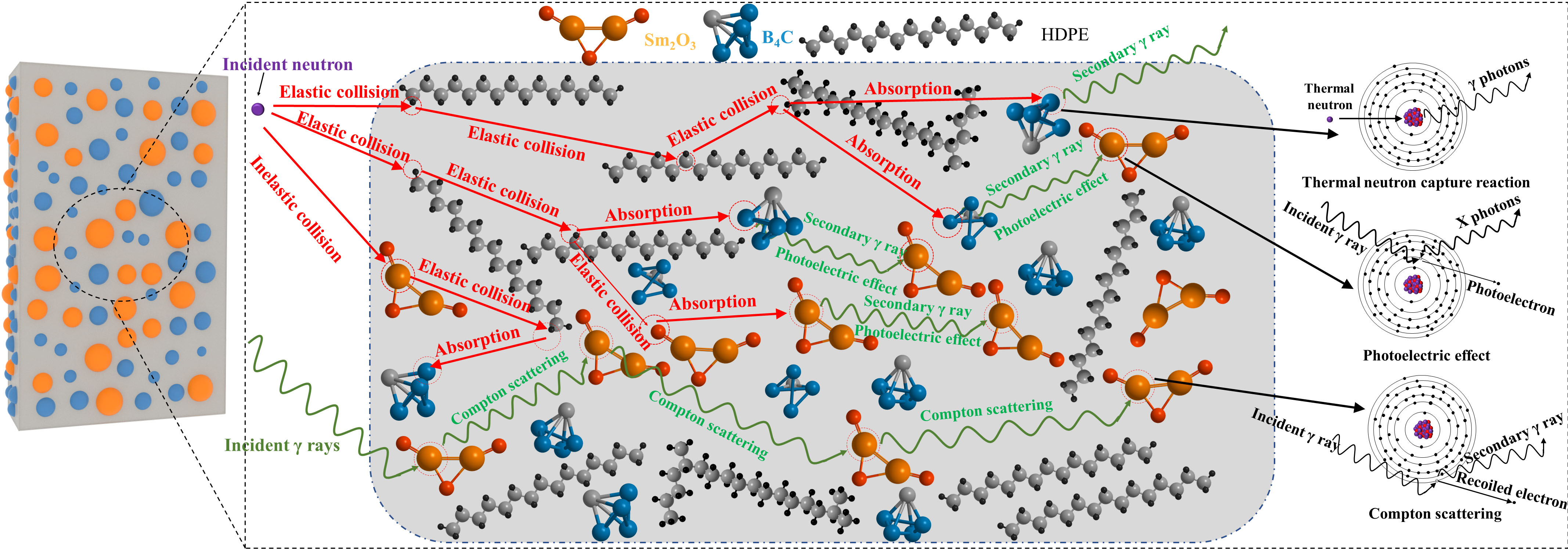
Dr. HUO Zhipeng and his student LU Yidong from the Hefei Institutes of Physical Science of the Chinese Academy of Sciences have developed a new type of composite material for neutron and gamma radiation shielding. They used micron plate Sm2O3, a type of rare earth-based filler, to reinforce boron-containing polyethylene.
The results were published in Composites Science and Technology.
Radiation protection relies on time, distance, and shielding. High-energy neutrons and gamma rays can damage tissues and genes. Lead-based materials are commonly used for shielding, but they're toxic. Samarium, a rare earth element, shows promise for shielding because it absorbs both neutrons and gamma rays. Developing rare earth fillers with specific properties could lead to better neutron-gamma shielding materials.
In this study, the researchers synthesized a series of micron plate Sm2O3 fillers with different specific surface areas and particle size distributions by homogeneous coprecipitation method. They found that by adjusting the synthesis process, fillers with uniform size and high surface area could be produced. These fillers were then added to boron-containing polyethylene to form composites. The composites showed improved thermal stability, mechanical strength, and radiation shielding properties compared to materials without the fillers.
Tests showed that the composite material could block 98.7% of the neutron radiation from a 252Cf source and 72.1% of the gamma radiation from a 137Cs source when the material was 15 cm thick.
This work provides a novel strategy for the development of radiation protection technology from the perspective of materials science.

SEM images of Sm2O3 micron plate (a), and SEM images of fracture surfaces of Sm2O3/B4C/HDPE composite (b-c). (Image by HUO Zhipeng)

The mechanism diagram of the composite materials interacting with neutron and gamma rays. (Image by HUO Zhipeng)

86-10-68597521 (day)
86-10-68597289 (night)

52 Sanlihe Rd., Xicheng District,
Beijing, China (100864)

